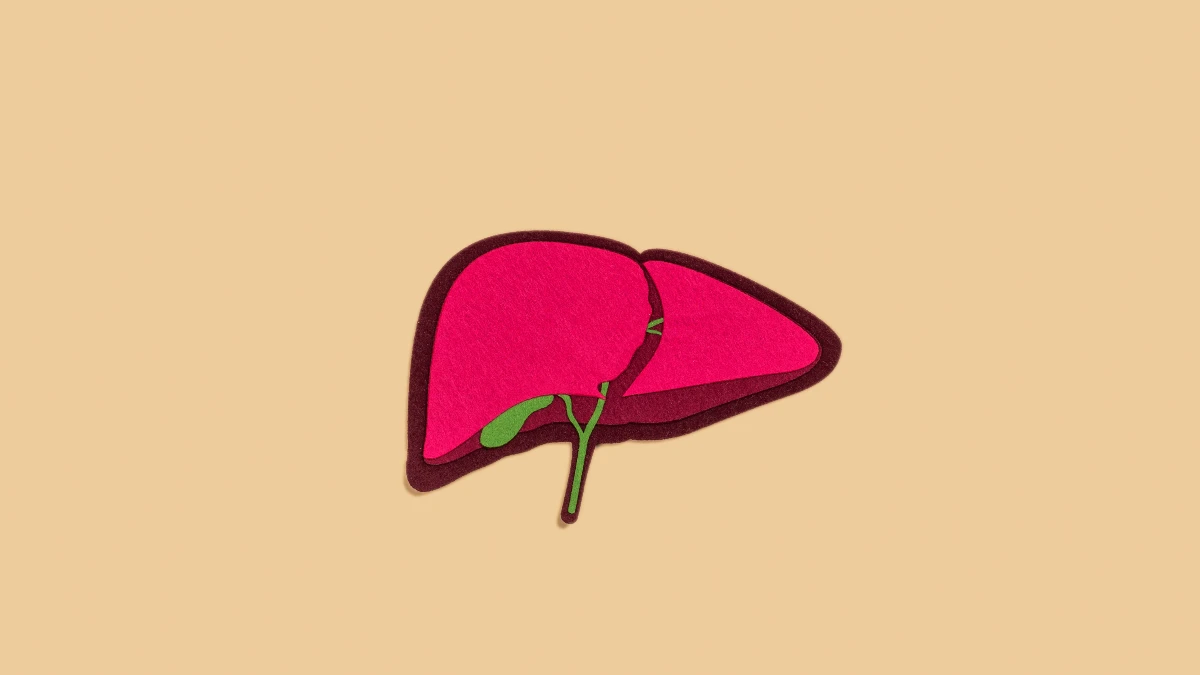Right now, nearly 1 in 4 Americans is walking around with a silent, fatty liver, and most have no idea. Your liver is your body’s tireless, vital filter, but it has a critical vulnerability: it is a “quiet” organ. This silence is the central danger.
As one liver specialist warns, patients often don’t realize anything is wrong until they develop permanent scarring. You cannot wait for symptoms. This article is your alarm bell. Forget the “liver cleanse” myths.
This guide outlines the specific foods bad for your liver and the simple, actionable swaps to protect your health, starting today.
The “Silent” Risk: Why Your Liver Is in Trouble (And What MASLD Is)
MASLD: The Silent Metabolic Risk
(and most don’t know it)
Type 2 Diabetes
of people with Type 2 Diabetes also have metabolic fatty liver disease.
Obesity
of individuals with severe obesity are affected by MASLD.
High Cholesterol
High triglycerides and low “good” (HDL) cholesterol are key risk factors.
The Silent, Progressive Stages
“The liver is remarkably resilient, but it is not invincible. The re-naming to MASLD confirms what we’ve long known: this is a warning sign from your metabolism that cannot be ignored.”— Liver Health Experts
Your liver is a tough, 3-pound organ that acts as your body’s main cleanup crew. It filters your blood, helps digest food, manages blood sugar, and breaks down toxins like alcohol. When it gets overloaded, trouble begins.
For decades, the main worry was alcohol. But a new threat has become the most common chronic liver condition in the country. You may have heard of Nonalcoholic Fatty Liver Disease (NAFLD). As of 2024/2025, doctors have officially renamed this to Metabolic dysfunction-associated steatotic liver disease (MASLD).
This isn’t just a new name. It’s a new way of understanding the problem. The name correctly points to the root cause: this is a metabolic disease.
It is directly linked to other issues like obesity, type 2 diabetes, and high cholesterol. This means your diet is the single most important factor.
The high prevalence—1 in 4 Americans—is driven by the liver’s “silent” nature. Because there are no early symptoms, millions of people build up fat in their liver cells without knowing it. This fat isn’t harmless. It causes inflammation.
Over time, that inflammation can lead to fibrosis (scarring), then cirrhosis (permanent damage), and finally, liver failure or liver cancer. The only way to win is to be proactive with your diet. You cannot wait for a warning sign that may never come.
1. Sugary Drinks (Sodas, Sports Drinks, Sweet Teas)
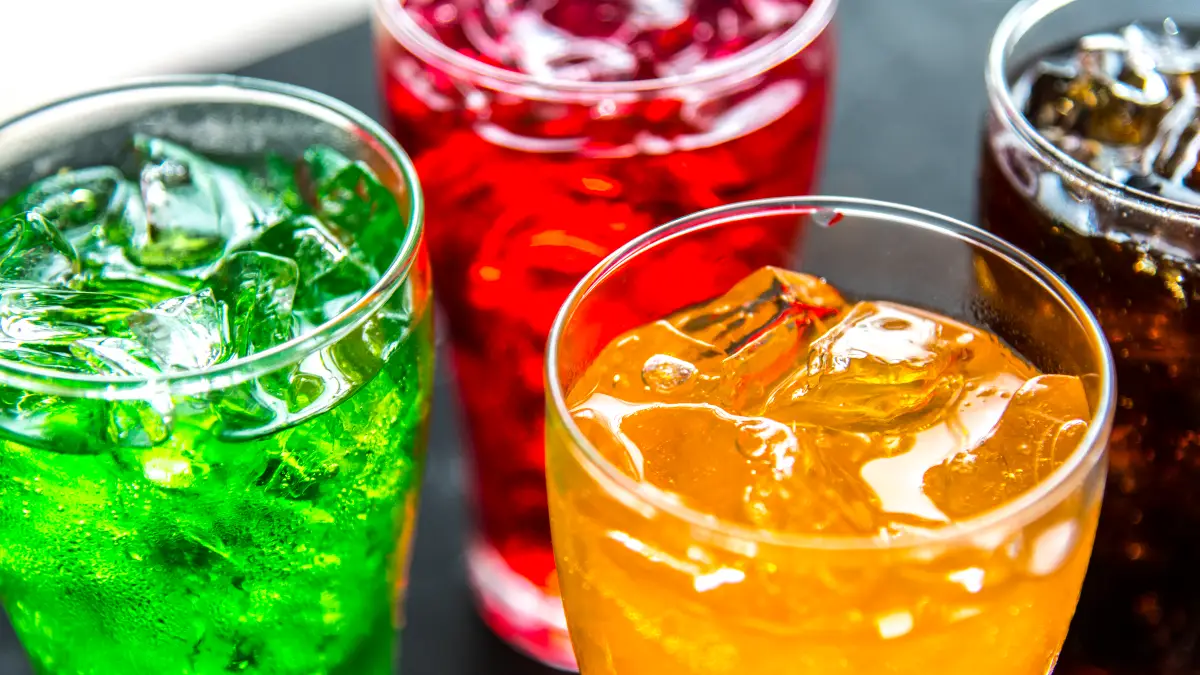
These are arguably the single worst offenders for your liver. They are the #1 way we consume high-fructose corn syrup and other added sugars. Studies show a direct and powerful link: the more sugary drinks you drink, the higher your risk for fatty liver disease.
These drinks are especially harmful because they are liquid calories. They don’t make you feel full. This makes it incredibly easy to drink huge amounts of sugar, which your liver is then forced to turn into fat.
The Actionable Swap
The best swap is water. But the most protective swap is black coffee. A growing body of research shows that drinking 2-3 cups of black coffee a day may help protect your liver from damage.
2. Fruit Juices (e.g., Orange, Apple Juice)
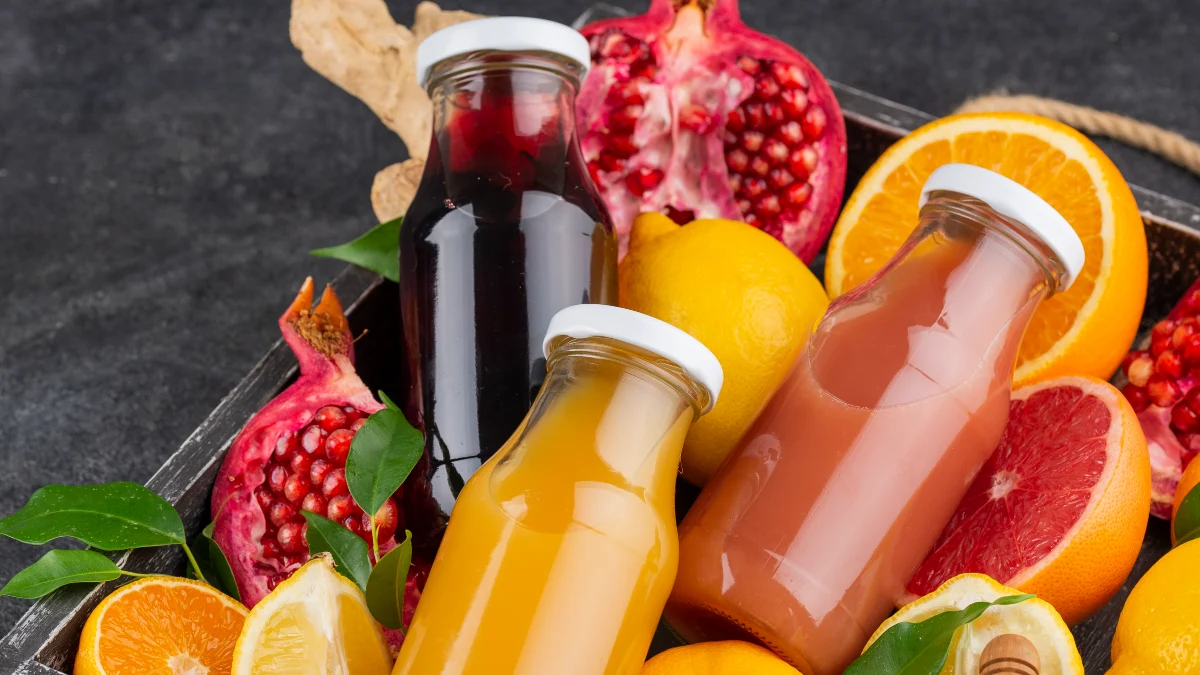
This may be the most surprising “health” food on the list. That 100% “natural” fruit juice is loaded with fructose. Your liver does not care if the sugar came from a soda can or a $10 cold-pressed juice bottle. When you remove the fruit’s natural fiber by juicing it, you are left with a pure sugar hit that slams the liver.
This is not a guess. Both the American Liver Foundation and the Mayo Clinic explicitly list fruit juices as a beverage to avoid to keep your liver healthy.
The Actionable Swap
Eat the whole fruit. An orange has fiber, which slows down the sugar’s absorption and helps your liver. Orange juice has none.
3. “Low-Fat” or “Fat-Free” Packaged Foods
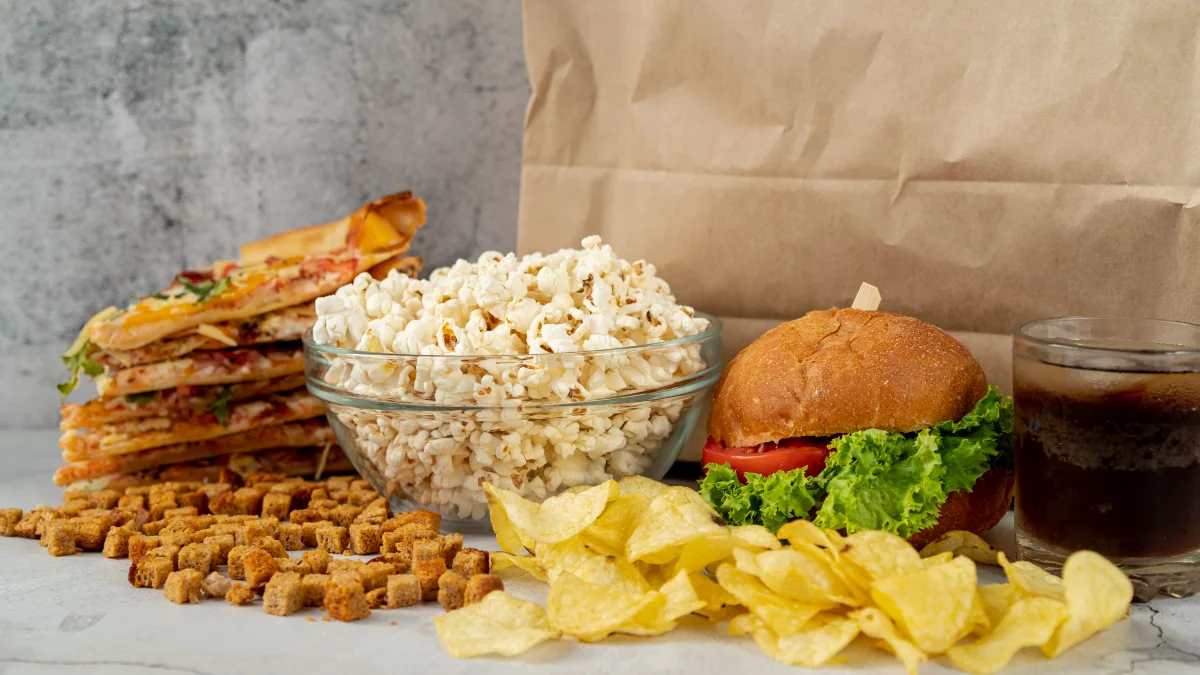
This is a critical “healthy” trap. For decades, we were told to avoid fat. But when manufacturers remove fat from foods like yogurt and salad dressings, they have to add something back for taste.
That “something” is almost always sugar, high-fructose corn syrup, and refined starches.
These “heart-healthy” or “low-fat” labeled products can harm the liver over time. You are trading harmless (or even healthy) fat for the very sugars that cause fat buildup in your liver.
The Actionable Swap
Choose full-fat, unsweetened options. Get plain Greek yogurt and add your own fresh berries. Use dressings made with healthy fats like avocado or olive oil.
4. Most Breakfast Cereals, Cookies & Pastries

These foods are a triple threat. They are loaded with added sugar, built on a base of refined (“white”) carbohydrates, and often contain unhealthy saturated fats. This combination is a fast track to liver inflammation.
Here is the 2025 alarm bell: A crucial 2025 study investigated the link between diet and the progression of fatty liver disease. The findings were clear: eating white bread, cookies, and breakfast cereals was “significantly associated with increased fibrosis progression.”
This is a really important point. Steatosis is fat in your liver. Fibrosis is scarring. That scarring is the bridge to permanent damage, called cirrhosis. This study directly links your common breakfast cereal or cookie to the scarring of your liver.
The Actionable Swap
Research shows its high fiber content helps your liver work at its best and can even help reduce belly fat.
5. Ultra-Processed Foods (UPFs)
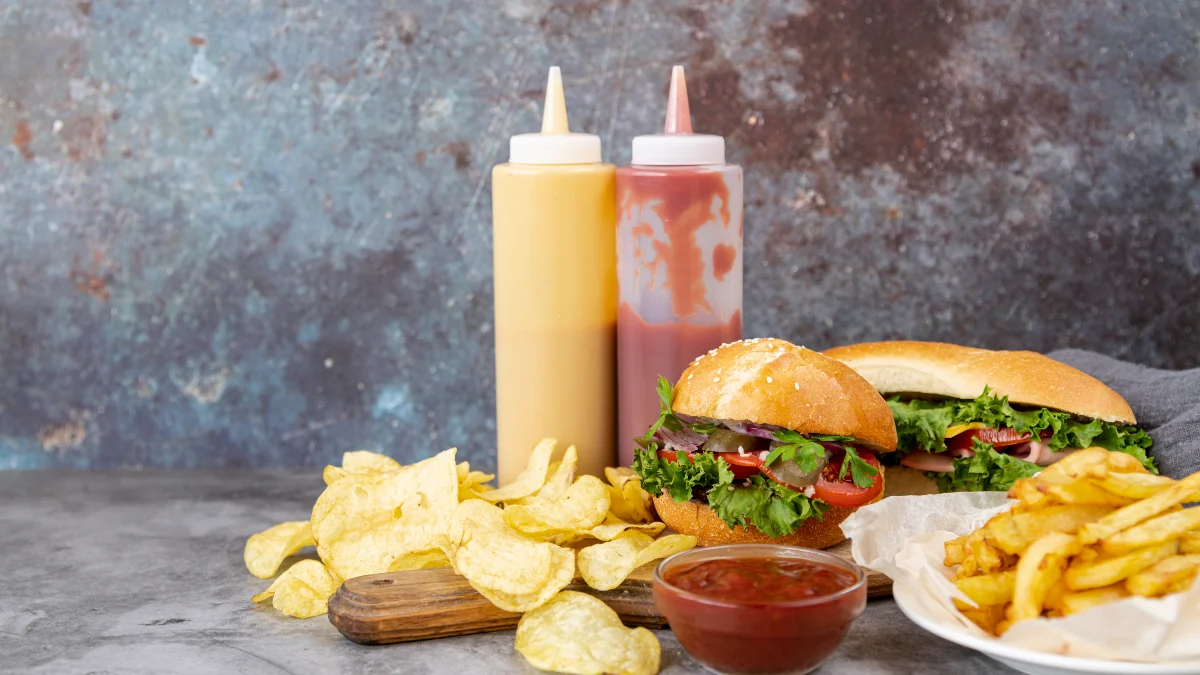
First, let’s define the term. UPFs are not just “processed.” They are formulations of industrial ingredients. They include additives, preservatives, and high levels of sugar, salt, and unhealthy fats.
Think of frozen meals, instant noodles, packaged snack cakes, hot dogs, and pizzas. They strain your liver by forcing it to process this cocktail of unnatural substances.
The 2025 Data: A major review of studies in 2025 provided the smoking gun. After looking at data from over 500,000 people. Researchers found that the “Highest UPF consumption was associated with a 22% increased risk of” fatty liver disease.
The Actionable Swa
Cook at home. The single most powerful defense against UPFs is the Mediterranean Diet, which is the #1 eating plan recommended by liver doctors. It is, by definition, the opposite of a diet high in processed foods.
6. Fast Food (Burgers & Fries)
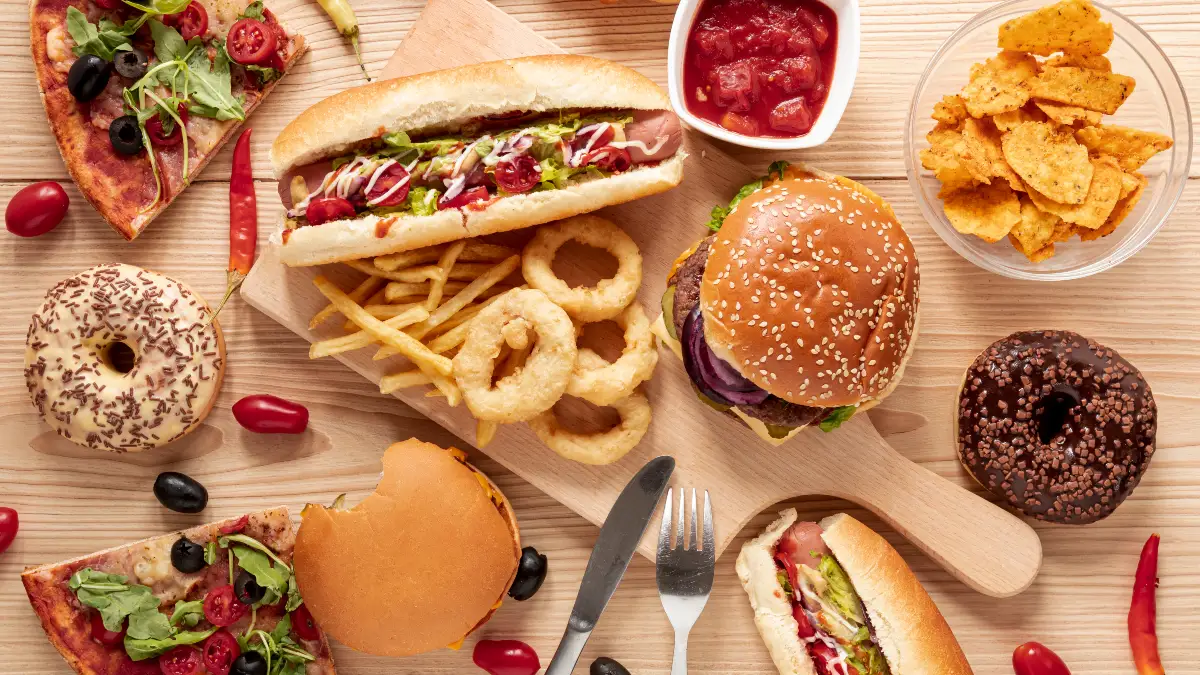
This is the classic UPF. It combines nearly every liver-harming element: high saturated fat, high sodium, and refined carbs (the bun and potatoes).
Eating too many foods high in saturated fat “can make it harder for your liver to do its job.” This can lead to inflammation, which “could cause scarring… known as cirrhosis.”
The data is sobering: a 2023 study showed that people who get just 20% or more of their meals from fast food (that’s only one meal a day) build up “excessive fat in their liver.”
The Actionable Swap
A home-cooked lean protein, like chicken or fish, with a large side salad. And for your dressing? Use olive oil.
7. Refined “White” Carbohydrates (White Bread, White Rice, White Pasta)
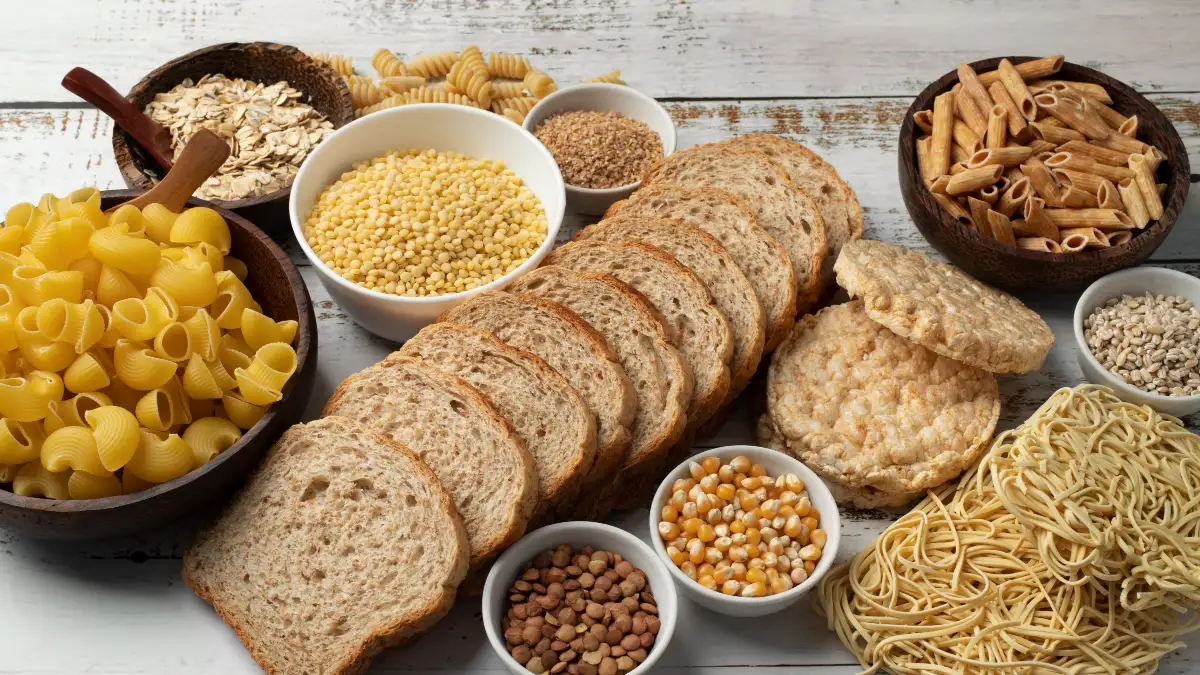
These “white” foods have been stripped of their fiber and nutrients. Your body processes them almost as fast as pure sugar. This spikes your blood sugar and helps turn on fat storage in the liver.
The Mayo Clinic and the American Liver Foundation both list refined carbs as a top food to avoid. But the greatest warning comes from that 2025 study we’ve already mentioned.
It specifically names “white bread” as being linked to “increased fibrosis progression” (scarring). That daily sandwich or morning toast could be contributing to permanent liver damage.
The Actionable Swap
100% whole grains. Look for “100% whole wheat” on the label, or switch to quinoa, brown rice, or whole-grain pasta.
8. Fried Foods

This is a well-known foe. Fried foods are high in “liver-loathing fats,” namely saturated and trans fats. They are directly linked to fat buildup in the liver.
When you deep-fry food, you not only add unhealthy fats but also change the food’s content in a way that promotes inflammation.
The Actionable Swap
Use an air fryer to get a crispy texture without the fat. You can also bake at high temperatures. Crucially, if you do cook with fat, use a healthy, unsaturated fat like olive oil.
9. Processed Meats (Hot Dogs, Bacon, Sausages, Lunch Meats)
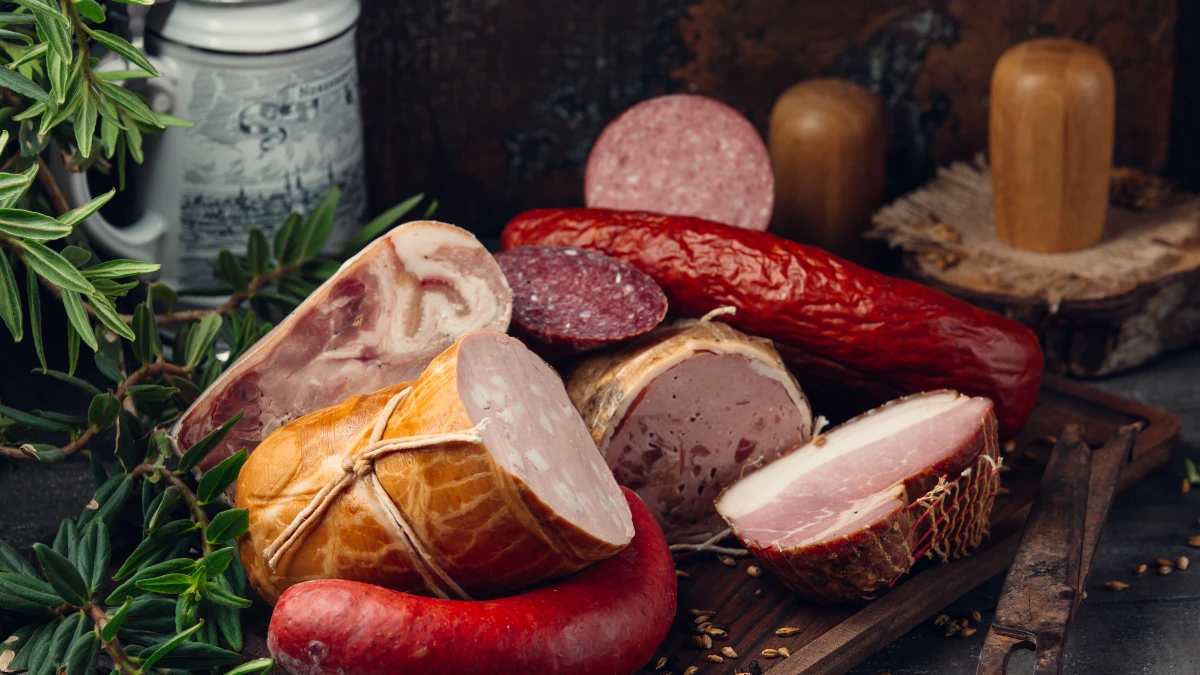
These are a non-negotiable “stop.” They are loaded with two of the liver’s worst enemies: saturated fat and high levels of sodium.
The medical consensus here is unanimous. Top medical centers and liver foundations all explicitly warn against processed meats.
They increase the risk of fat in the liver and are linked to other diseases, including colorectal cancer.
The Actionable Swap
Lean, unprocessed poultry (skinless chicken, turkey) or fish.
10. High-Fat Red Meat (Beef, Lamb, Pork)
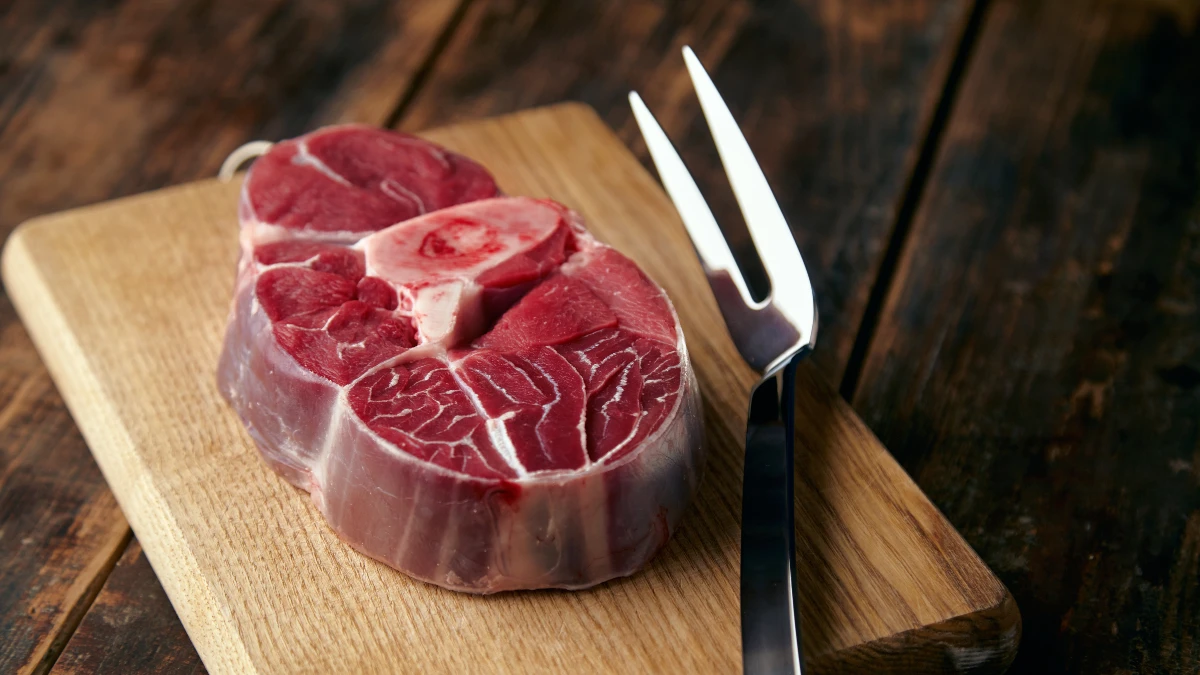
The main problem with red meat is its high saturated fat content. This is where the expert advice gets nuanced. The American Liver Foundation says lean meats are an important source of protein, but to avoid fatty meats.
The Mediterranean diet, the #1 diet recommended for reversing fatty liver, suggests saving red meat for special occasions and choosing lean cuts when you do. This is a strategy of reduction, not total elimination.
The Actionable Swap
Aim to eat fatty fish (like salmon) at least twice a week. It contains anti-inflammatory omega-3 fatty acids, which are actively good for your liver.
11. Full-Fat Dairy (Butter, Whole Milk, Cheese)
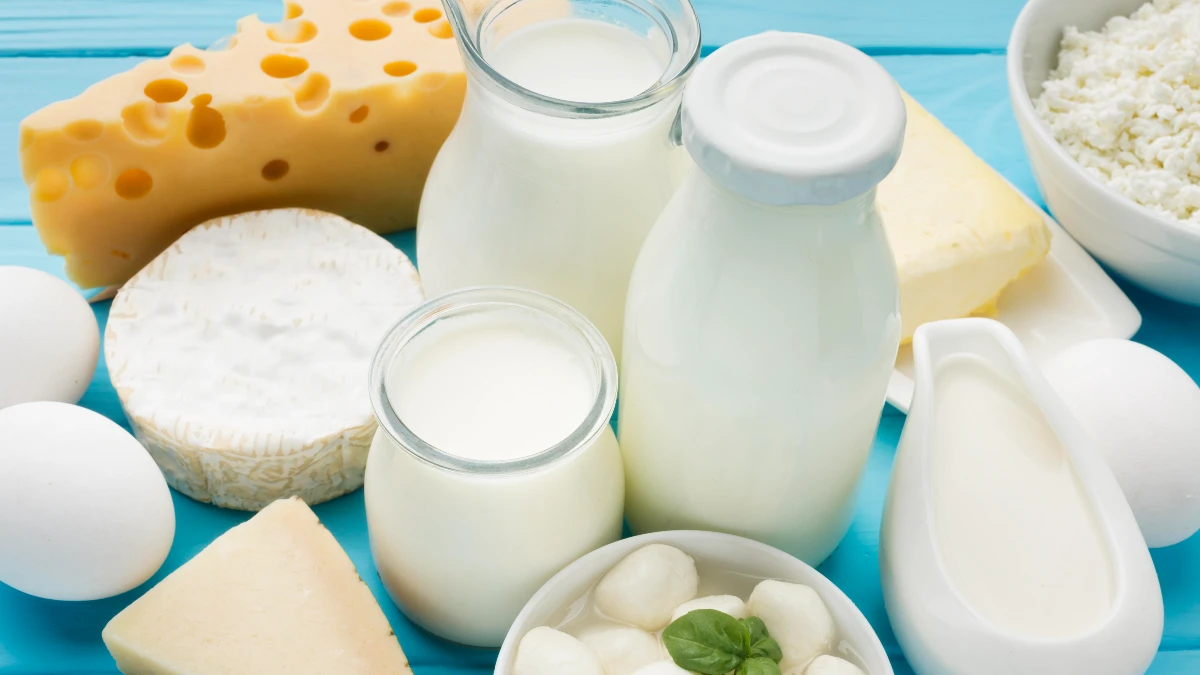
Like red meat, these are major sources of saturated fat. The Mayo Clinic lists butter and whole milk as foods to avoid for fatty liver disease. The American Liver Foundation recommends switching to low-fat or fat-free dairy products.
The Actionable Swap
Switch to low-fat dairy. But the best swap for a fat source is Olive Oil. The Steatotic Liver Disease Clinic at UChicago Medicine gives a stunningly specific recommendation.
Eat four tablespoons of olive oil a day. This is a “liver-loving fat” that actively helps your liver.
12. Green Tea Extract
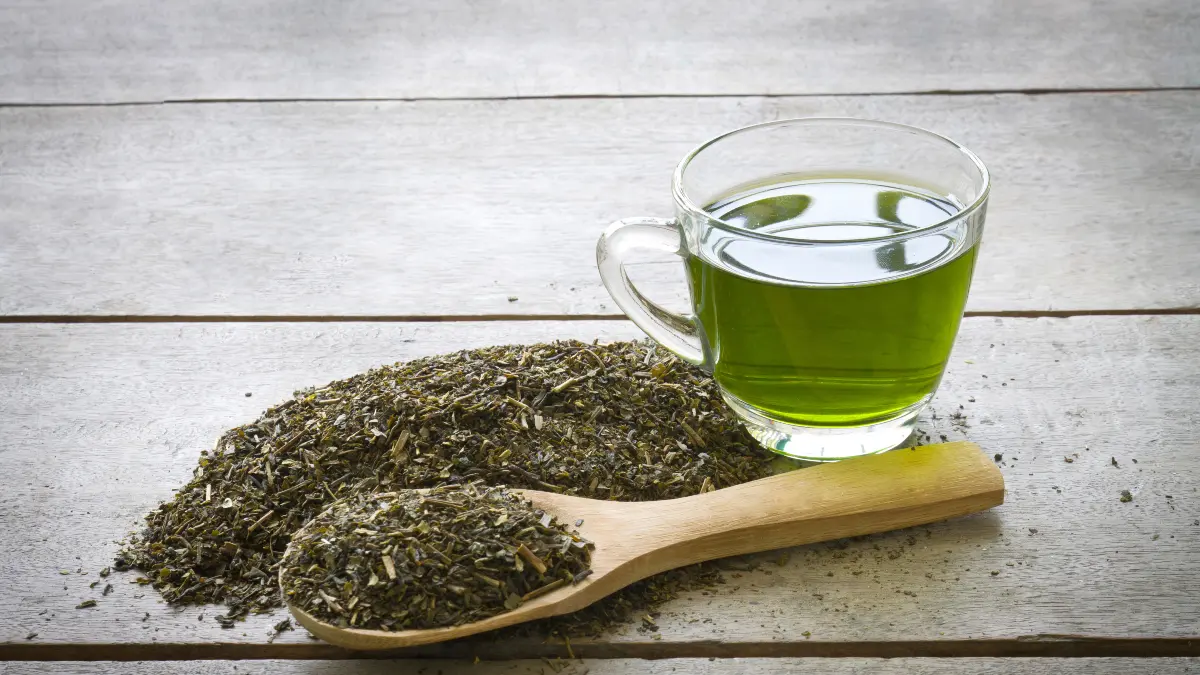
This is the single most important “healthy” trap. To be clear: brewed green tea is healthy. It is full of antioxidants and is fine in moderation.
The danger lies in high-dose green tea extract. This is commonly sold in weight-loss and “fat-burner” supplements. These concentrated pills are “linked to liver toxicity.” In extreme, documented cases, they have caused acute liver failure requiring an emergency transplant.
The mechanism is one of overdose. The “concentration of catechins… in excess, can strain the liver and cause inflammation.” These massive doses “overwhelm liver enzymes” in a way that drinking a few cups of tea never could.
The Actionable Swap
Drink brewed green tea in moderation. Throw away any “fat-burner” pills that list green tea extract as a primary ingredient.
13. Herbal & Dietary Supplements (HDS) (e.g., “Weight-Loss” Pills)
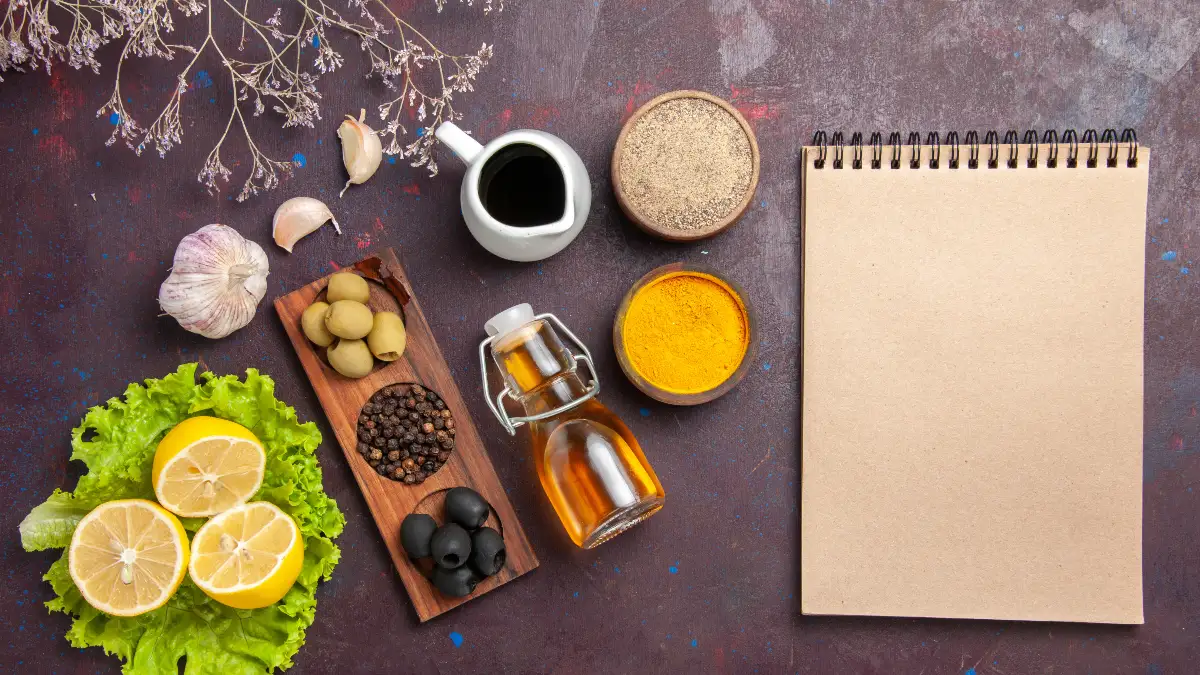
Broadening the lens from green tea, the entire Herbal and Dietary Supplement (HDS) market is a “Wild West” for your liver. These products are not regulated as drugs. The FDA does not need to approve them for safety before they are sold.
The results can be tragic. HDS can be contaminated, mislabeled, or spiked with something that poisons your liver.
The Transplant Link
One study found that HDS products were the 4th most frequent cause of drug-induced liver injury leading to urgent liver transplantation.
The Scale
In the U.S. Drug Induced Liver Injury Network, HDS account for an increasing number of cases, recently over 16%.
This warning includes other “healthy” supplements. For example, excessive turmeric supplements (in capsule form, not the spice you cook with) have also been “linked to immune-related injury in the liver.”
The public health warning is clear: “natural” does not mean “safe.” The FDA only checks after problems are reported. You are the guinea pig.
The Actionable Swap
Get your nutrients from food. Do not take any supplement without first discussing it with your doctor.
14. Alcohol (Beer, Wine, Spirits)
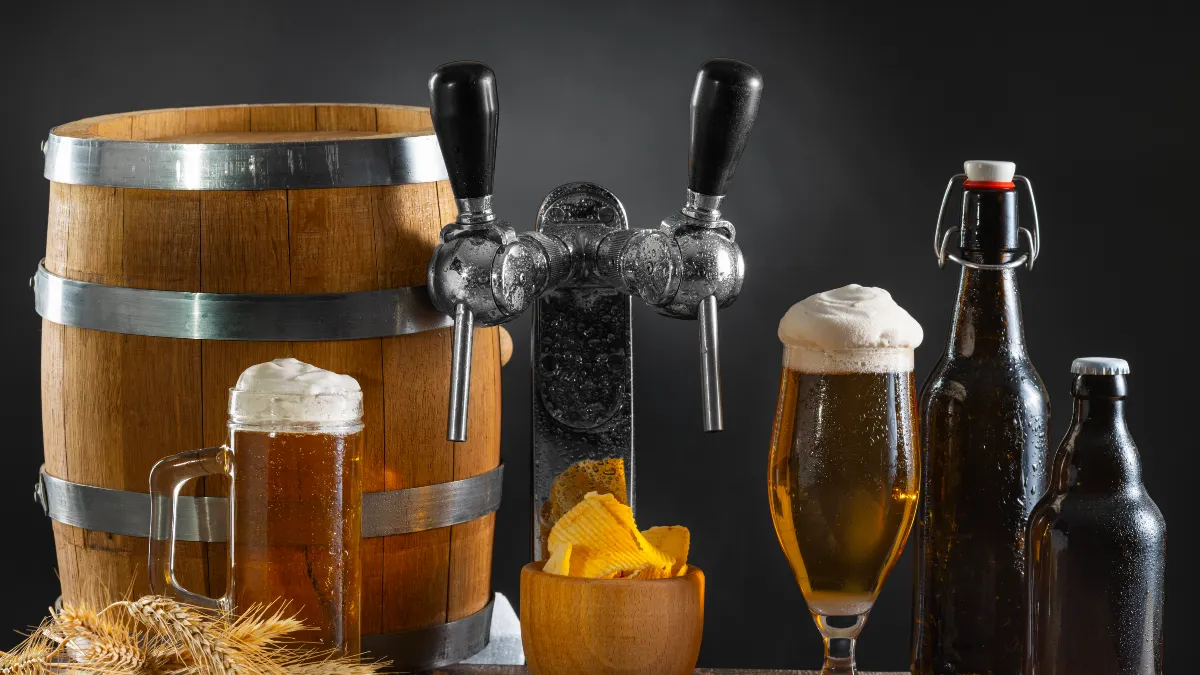
This is no surprise. Excessive alcohol use is a “leading cause of cirrhosis.” It is a direct toxin that your liver must work hard to break down, creating inflammatory byproducts in the process.
The expert advice, however, has become more strict. While excessive drinking is the main culprit, the advice for people who already have fatty liver disease is different. The Mayo Clinic’s advice is clear: People with MASLD should not drink alcohol. Period.
Your liver is already fatty and inflamed; adding alcohol is like pouring gasoline on a fire. Dr. Basra’s chilling warning: “Once the liver reaches cirrhosis, it’s too late to reverse it”.
The Actionable Swap: Water, unsweetened sparkling water, or, as a healthy alternative, a cup of black coffee.
15. Excess Salt / Salty Foods
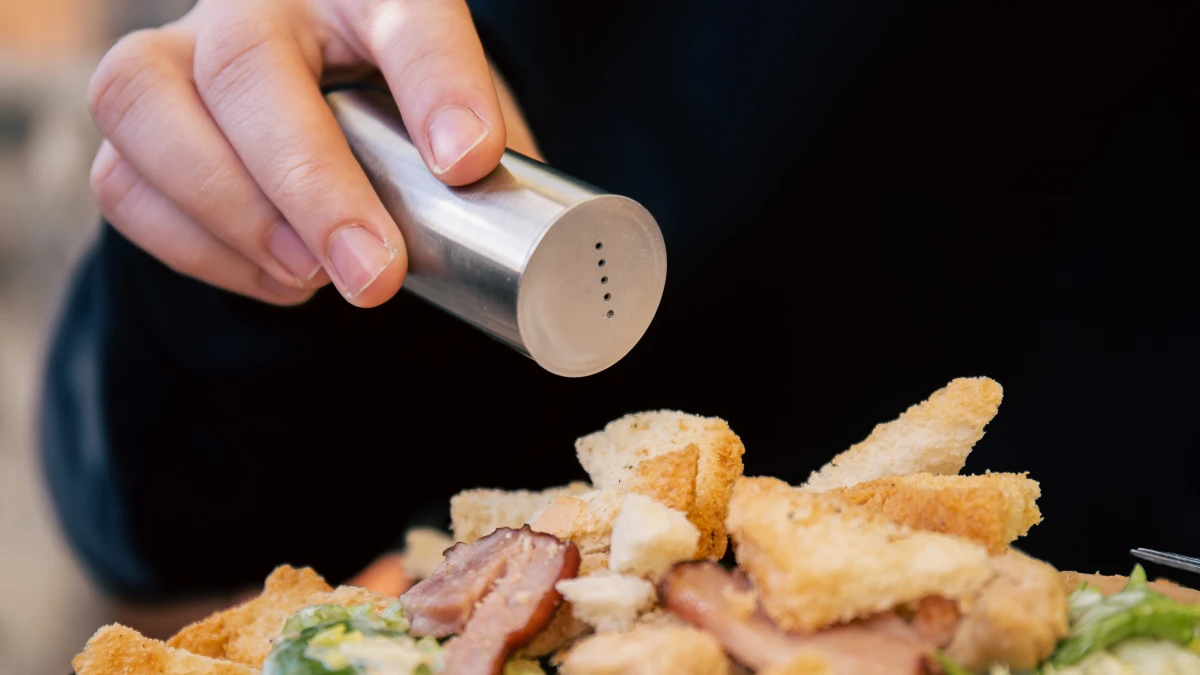
We are trained to think of salt as a blood pressure problem, but it is a liver problem, too. Research links high salt intake to liver disease. One study found that people who “regularly add extra salt to food” are more likely to develop fat buildup in the liver.
This warning isn’t just about the salt shaker. The vast majority of salt we eat comes from processed and packaged foods, like canned vegetables, frozen meals, cheeses, and processed snacks.
The Actionable Swap
Use herbs and spices to flavor your food. Oregano, sage, rosemary, garlic, and lemon zest are all fantastic, liver-friendly alternatives that add flavor without the risk.
Conclusion
Protecting your liver isn’t about a 3-day “detox.” It’s about making smart, steady choices to avoid a lifetime of damage. As you’ve seen, the biggest threats are often the ones you don’t suspect. It’s the sugar in your “healthy” juice, the “white” carbs in your cereal, and the hidden danger in a “natural” supplement bottle.
Your liver is silent, so you have to be its advocate. The damage builds up over time, but for most people, it is preventable. The power to change this is in your hands.
Don’t get overwhelmed by this list. Just start with one simple change. This week, swap your daily soda for a cup of black coffee. Or swap your white bread for a bowl of oatmeal. Your liver will thank you. Share this article with someone you love—you might be the advocate their silent liver needs.

